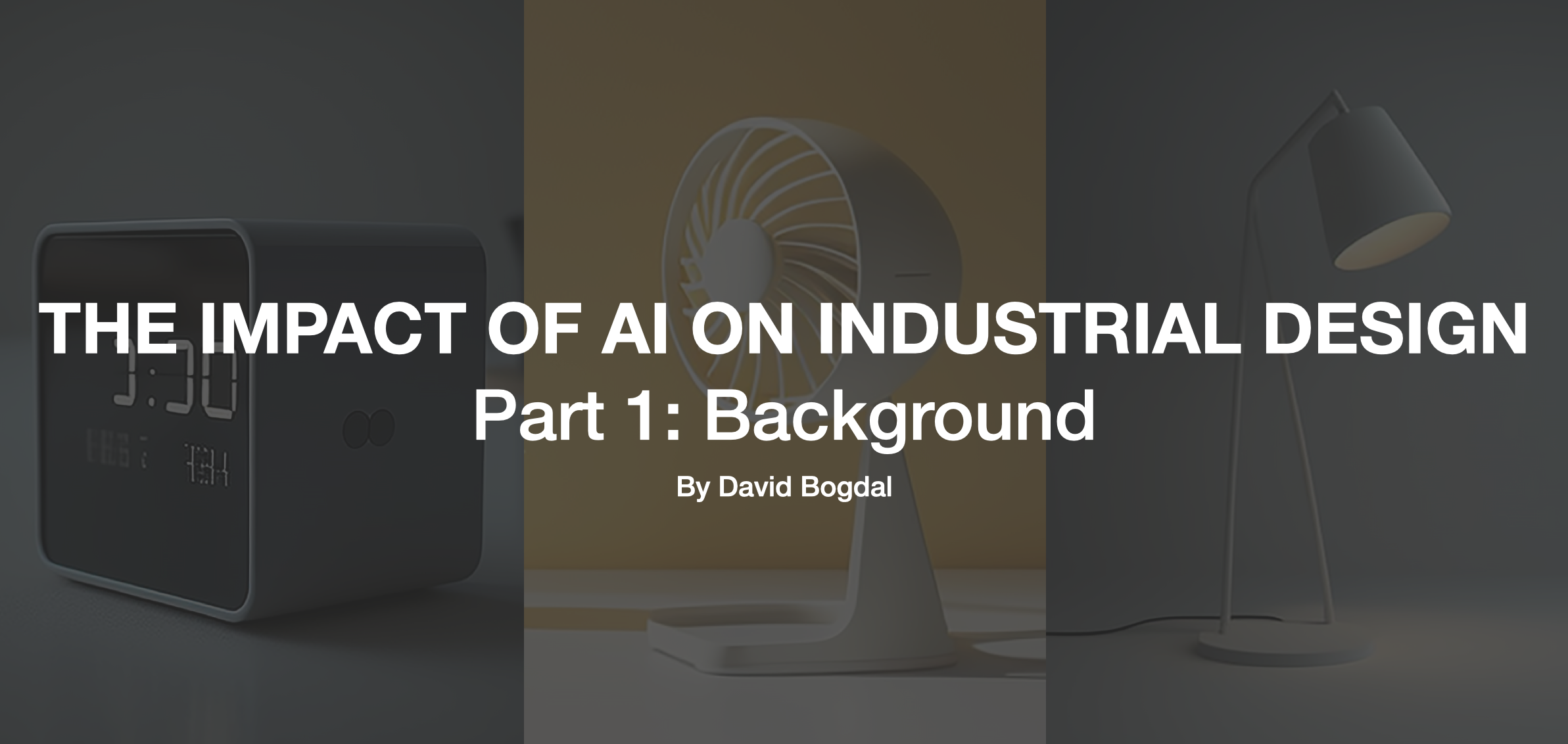Note: This is part 1 in a series. Read part 2 here.
Note from the Author: The following article was not generated with ChatGPT or other artificial intelligence text generators. I feel that analyzing AI in the context of design requires self-immersion and reflection to really share our discoveries and express what we’ve found. Images were generated in Midjourney 4.
My jaw dropped the first time one of our clients asked if we’d looked into using AI to help speed up the design process. Was the future already here? We hadn’t yet (nor would we have) done that sort of exploration on a client’s time. But at the next available opportunity, we dove right in. In this series of pieces, we’ll share our thoughts and insights on AI in the context of physical product design, how we are exploring the use of it, and what it means for the future of design.
While AI has been covered extensively of late, it’s always valuable to review the basics. Artificial Intelligence, now commonly referred to as AI, is a digital software system that can provide an output of intelligence based on an input. From the design standpoint, we’re exploring artificial intelligence text-to-image generators where a user provides a text prompt input, and, through artificial intelligence, an AI system produces an image.
With the introduction of AI, we find ourselves at a critical juncture in history that will have a significant impact on design and humanity overall comparable only to:
The Industrial Revolution and the introduction of mass-manufacturing of products which we design and develop.
Harnessing electricity, and with it the light bulb, the telephone, the radio, television, the transistor, computers, the internet, smaller batteries, mobile phones, and smartphones.
Artificial intelligence will have the same level of impact on life, society, the economy, and civilization as a whole. Like all of these technological revolutions, there is always an initial phase of uncertainty before moving toward widespread adoption, and ultimately advancement.
At present we are in that period of uncertainty, but as an interdisciplinary designer I can already see how AI will change every design field. From graphic design, web design, branding design, packaging design, and even UI/UX design. My focus, for now, is exploring what this could mean for the future of the industrial design of physical products.
At the start of a project, many Industrial Designers (myself included) turn to sites like Pinterest to generate initial mood boards that elicit a design language intent for a product. We’ll scour for these images, collect them into boards, and further refine them into beautiful collages of commonality used to visually showcase to a client what it is that we are suggesting this product looks like for their brand and their target user/audience. It is quite literally the process of taking “old” ideas and morphing them into new.
But where do ideas come from in the first place? There’s a fantastic video series called Everything is a Remix which explores this concept across music, film, products, and photography. In short, new work is stirred by what has been previously seen or experienced. As an example during the dawn of motion pictures, when displays were black and white, people dreamed in black and white. This showed that dreams and the wild imagination within them are spurred by our everyday exposures. As such, ideas aren’t necessarily new, but a continuation / evolution of previous ideas. The most basic morphology of old ideas into new ones include the actions of copy, transform, or combine.
We now know that AI is very capable of kicking off this initial project phase; the idea phase. While we have always used “keywords” to describe a design language to a client, we can now use those same words to describe design to an AI system. Rather than turning to sites like Pinterest and amassing others’ design works, we have the ability to show what these products could look like with a design style applied through word choice (though bearing in mind ultimately AI art is generated from others’ design works as well). Normally we wouldn’t sketch out this early design language work due to time and budget constraints, and instead leave it at a handful of mood boards filled with cropped details, general forms, and word descriptions. Once the client narrows it down to one or two paths, we then move forward with the sketching phase. It remains to be seen how good AI might be at this, but there’s interesting research and experimentation taking place.
As we find ourselves in the beginning of the AI chapter, what it means for design is still unknown. We have some ideas, but at this stage are left with even more questions. In subsequent posts, I’ll cover how the team at Spanner is exploring the use of AI in design, and all of the ways we see it impacting our daily work.
David Bogdal is Director of ID & UX at Spanner.
He enjoys the challenge of working on a wide range of client products which all require multi-faceted approaches. Outside of work, David's into movies, house projects, and family time.
Interested in learning more about what it’s like to collaborate with Spanner?


